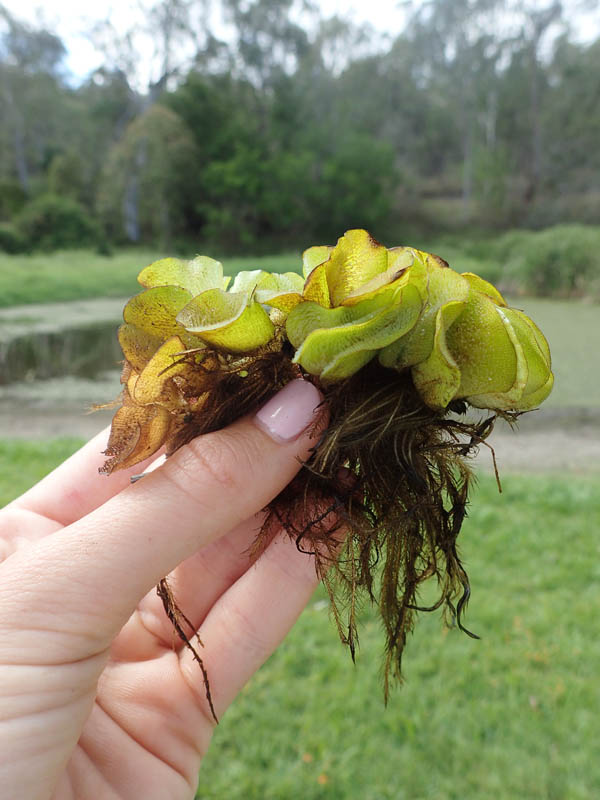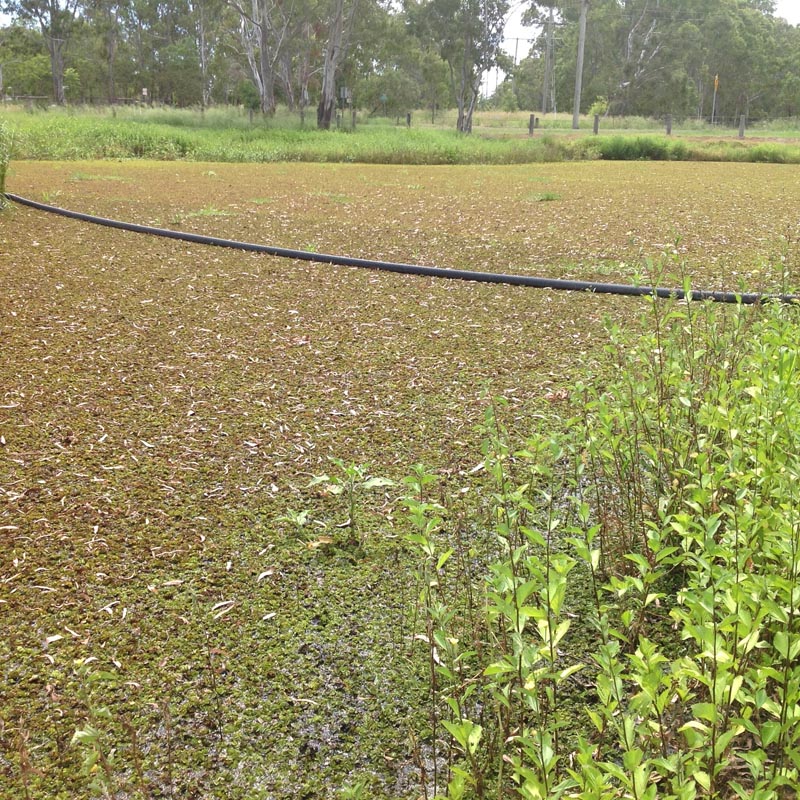Two releases of Salvinia Weevil (Cyrtobagous salviniae) were initially conducted: the first in March 2014 in boom area 1; and the second in October 2015 in boom area 2. Boom area 3 was controlled by spraying with the herbicide Reglone using Agral as the wetting agent.
Boom area 1 has not been sprayed with the herbicide since the weevils were released. The weevils have had ample time to establish and we have noticed the incredible activity of the weevils, in particular during summer. As a result, large areas of Salvinia first yellowed, then went very brown and finally turned black and dropped just beneath the water where it is in the process of sinking.
Boom area 2, where we released the weevils in 2015, has had less time to establish, though there has been a significant amount of browning off of Salvinia – a sure sign of the weevils at work – in very large patches.
In boom area 3, we were managing Salvinia by way of a regimented and controlled spraying regime, which kept this area completely devoid of Salvinia. However, we missed one spray (we went
away on holidays) and within 14 days the once lovely clear surface of the water was completely covered with fresh new Salvinia growth! So we introduced some of the weevil-infected Salvinia from boom area 2 and within a few months noticed the Salvinia showing signs of weevil activity due to the yellowing/browning off. We won’t conduct further spraying at this point in time as we want the weevil to establish in this area while we have the hot weather on our side.
Our plan was once the weather starts to cool and weevil activity slows, to spray any remaining Salvinia with herbicide.
But to date, we have not had to spray any of the remaining Salvinia as the weevils have established over the summer and effectively managed to control the infestation. We will keep a watch on this, though, as the extremely hot temperatures in February and March rain events have led to fresh young growth of Salvinia around the edge of boom area 3; this may need to be sprayed once we receive some fine weather. The everpresent native Common Duckweed (Lemna aequinoctialis), food for turtles and fish, has completely covered the other two boom areas and seems to be preventing new growth of Salvinia.

 In 2015, booms were installed to separate treatment areas. In the image below, the
In 2015, booms were installed to separate treatment areas. In the image below, thewater surface is covered with Salvinia.
Land for Wildlife member
Blackstone, Ipswich

I am also managing salvinia in our dam and I would like to swap notes with Leanne Field. I have a collection of related photos here >> https://www.flickr.com/photos/cheap-thrillz/albums/72157664428410207
Please pass on my email her.
Thank you
Thanks Hans. I have passed on your details to Leanne.
Hi,
Great work Leanne. Working with salvinia is definately challenging. Could I ask where you got your booms from?
Thanks,
Kim
Hi Kim. There are quite a few commercially available booms for dams available. Best to google it.
We are also battling salvinia. Can I ask where you got the weavils from? Could you email me details please? I haven’t been able to find some and would love to try this.
Hi Renee. This article provides more details on where to source Salvinia weevils from. goodluck!
https://www.brisbane.qld.gov.au/clean-and-green/natural-environment-and-water/biodiversity-in-brisbane/wildlife-in-brisbane/invasive-plants-and-animals/biocontrol-for-aquatic-weeds